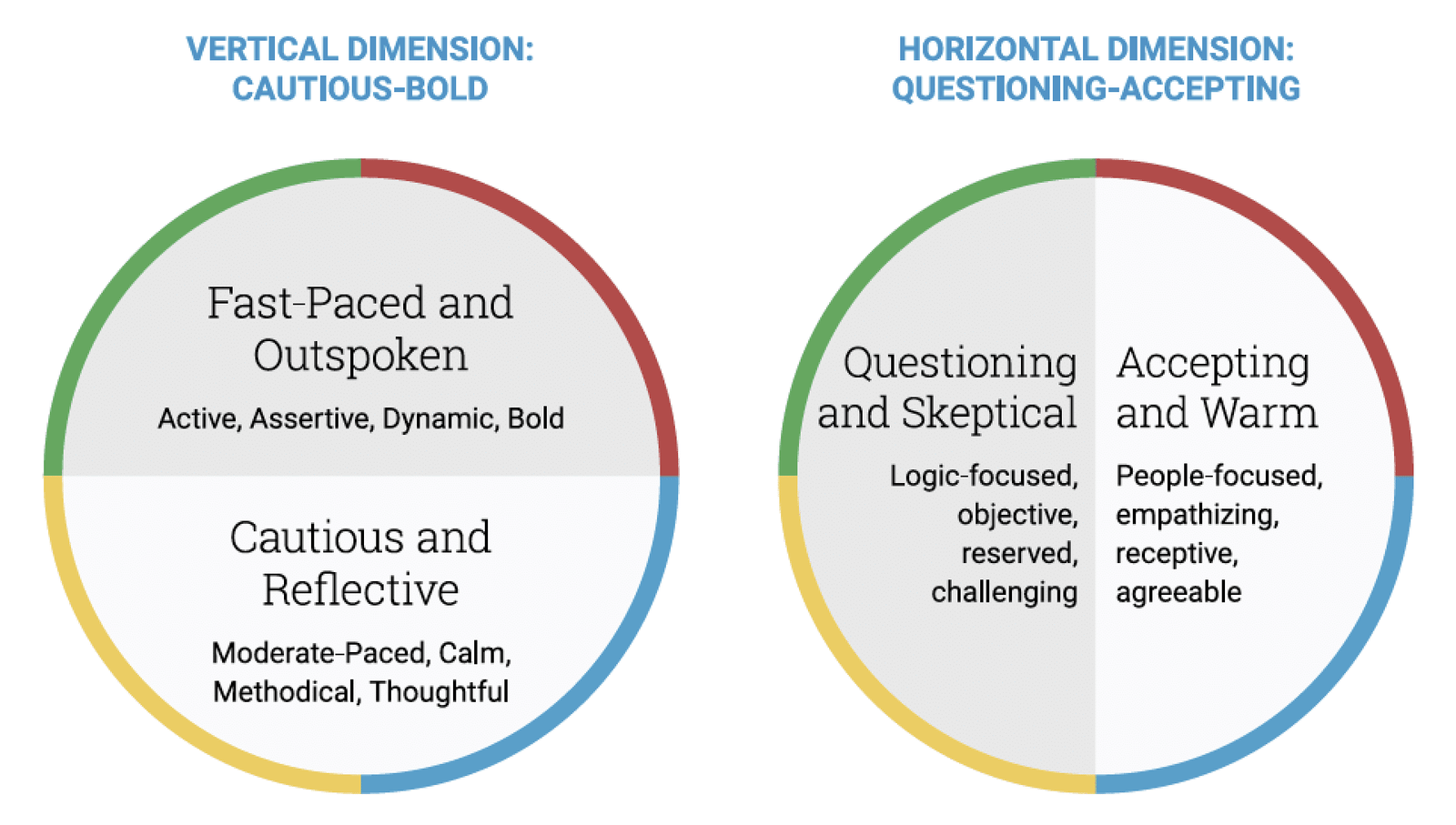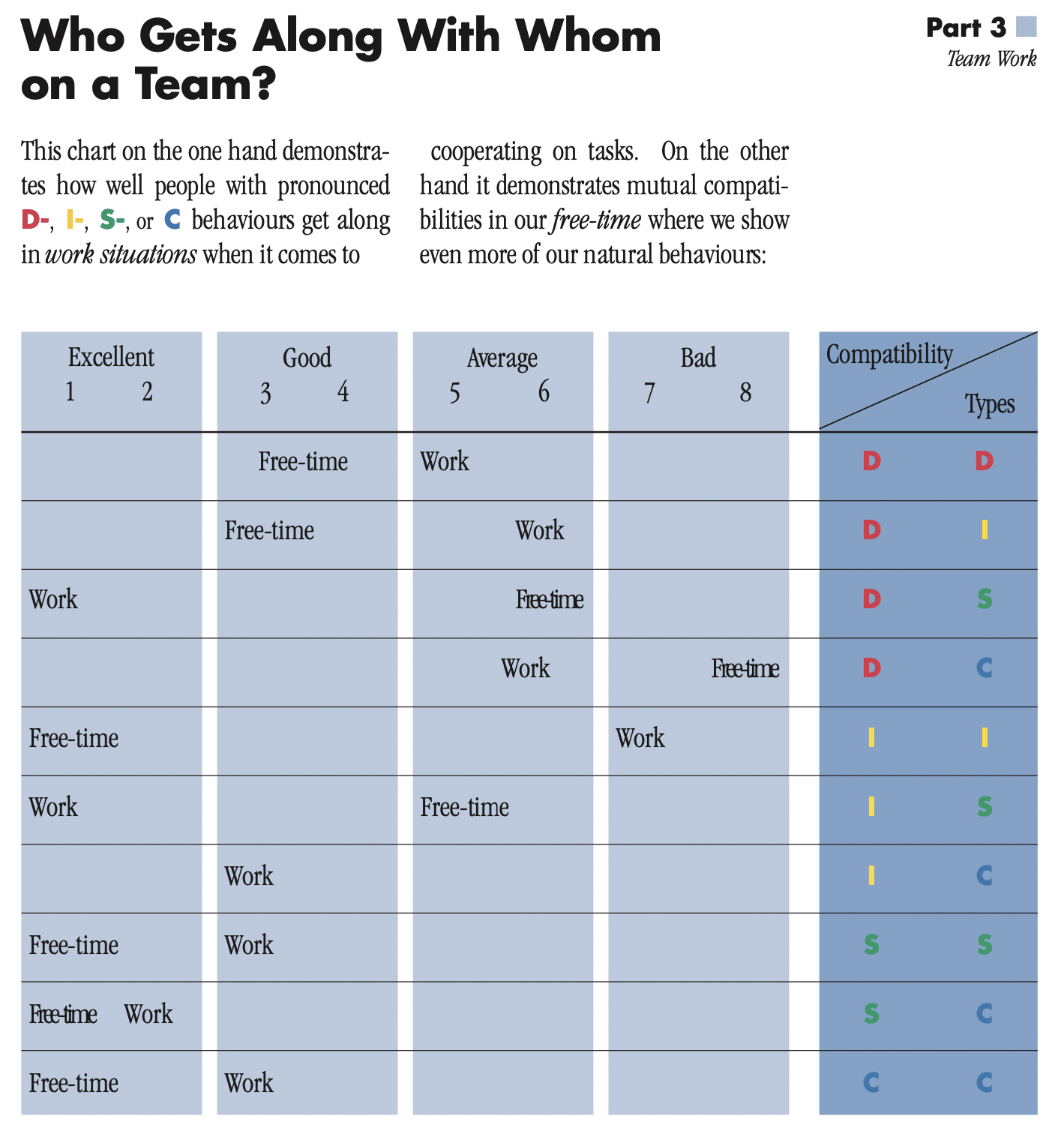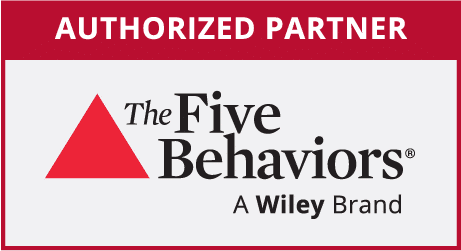
Who Gets Along with Whom on a Team?
When it comes to teamwork, relationships, or even friendships, we often ask: “Who gets along with whom?” The answer isn’t always simple—but DiSC® gives us a helpful framework to better understand the dynamics of compatibility.
At its core, the DiSC model measures two key dimensions of human behavior:

Fast-paced and outspoken (D and i) vs. Cautious and reflective (S and C)
Questioning and skeptical (D and C) vs. Accepting and warm (i and S)
These dimensions form the foundation of how we communicate, make decisions, and relate to others. And when these natural preferences clash, misunderstandings—or powerful synergies—can emerge.
Opposites Don’t Always Attract, But They Can Complement
Take, for instance, the classic “opposites” in DiSC:
-
D and S styles
-
i and C styles
These styles often see the world through very different lenses. The fast-acting D might feel the S is too slow to decide. The detail-focused C might think the i is too impulsive or emotionally driven.
However, when understood and appreciated, these differences can also create balance. A D-style leader may learn patience from an S-style partner, while a C-style thinker can benefit from the energy and optimism of an i-style collaborator.
Similar Styles Can Clash Too
Interestingly, even people with the same DiSC style can struggle. Two D-styles might clash over control. Two i-styles might compete for the spotlight. That’s because similar tendencies can amplify both strengths and blind spots.
One powerful tool to reflect on this is the Everything DiSC Comparison Report, which often highlights potential friction areas. For example, two skeptical individuals may challenge each other’s ideas without fully listening—leading to tension, even if their intentions are aligned.
Work vs. Free-Time Compatibility
The chart below, drawn from DiSC insights, reveals how people may relate differently in work settings versus free-time situations.
In professional settings, certain pairs like D and C may get along better due to shared task-orientation, even if they struggle in relaxed, social situations. In contrast, i and S types often enjoy natural harmony in their work lives, thanks to their shared warmth and people focus.
This reminds us that context matters—compatibility isn’t fixed; it’s situational and relational.
So, What Makes Relationships Work?
There’s no “perfect match” in DiSC. Strong relationships are not built on shared letters but on shared effort—understanding, communication, and flexibility. The most compatible partners, teammates, or friends are those who:
-
Speak openly about their needs and preferences
-
Are curious about how others experience the world
-
Adapt their behavior to support mutual understanding
As the DiSC model suggests, simple differences can make big differences. But with awareness, those differences don’t have to divide us—they can bring us closer together.
Ready to Explore Your Compatibility?
Whether you’re leading a team, navigating a relationship, or just want to understand yourself and others better, DiSC offers practical, actionable insights.
Want to try a comparison with a colleague or partner? Let us know—we can guide you through it.
Want to learn even more? Join our next DiSC® Certification course.
You might also be interested in









